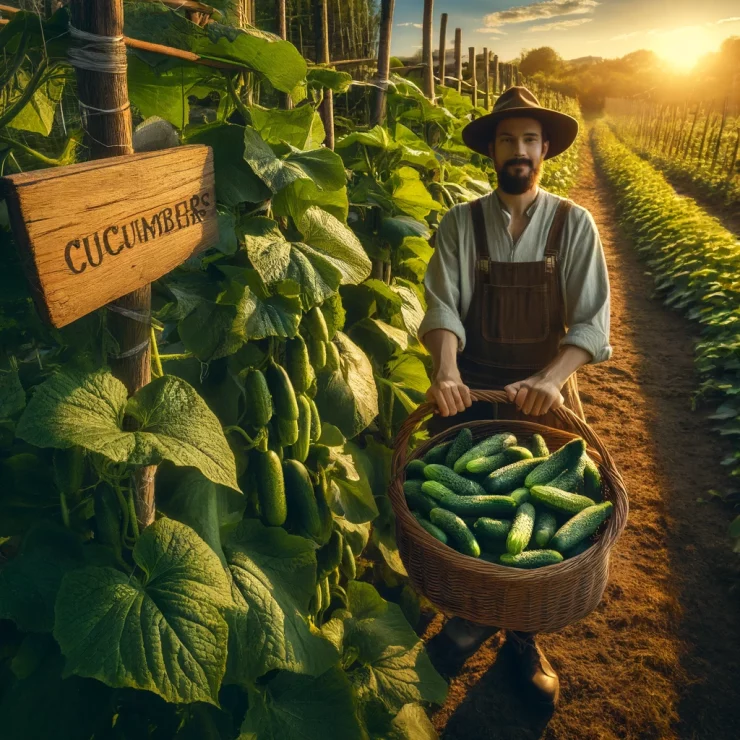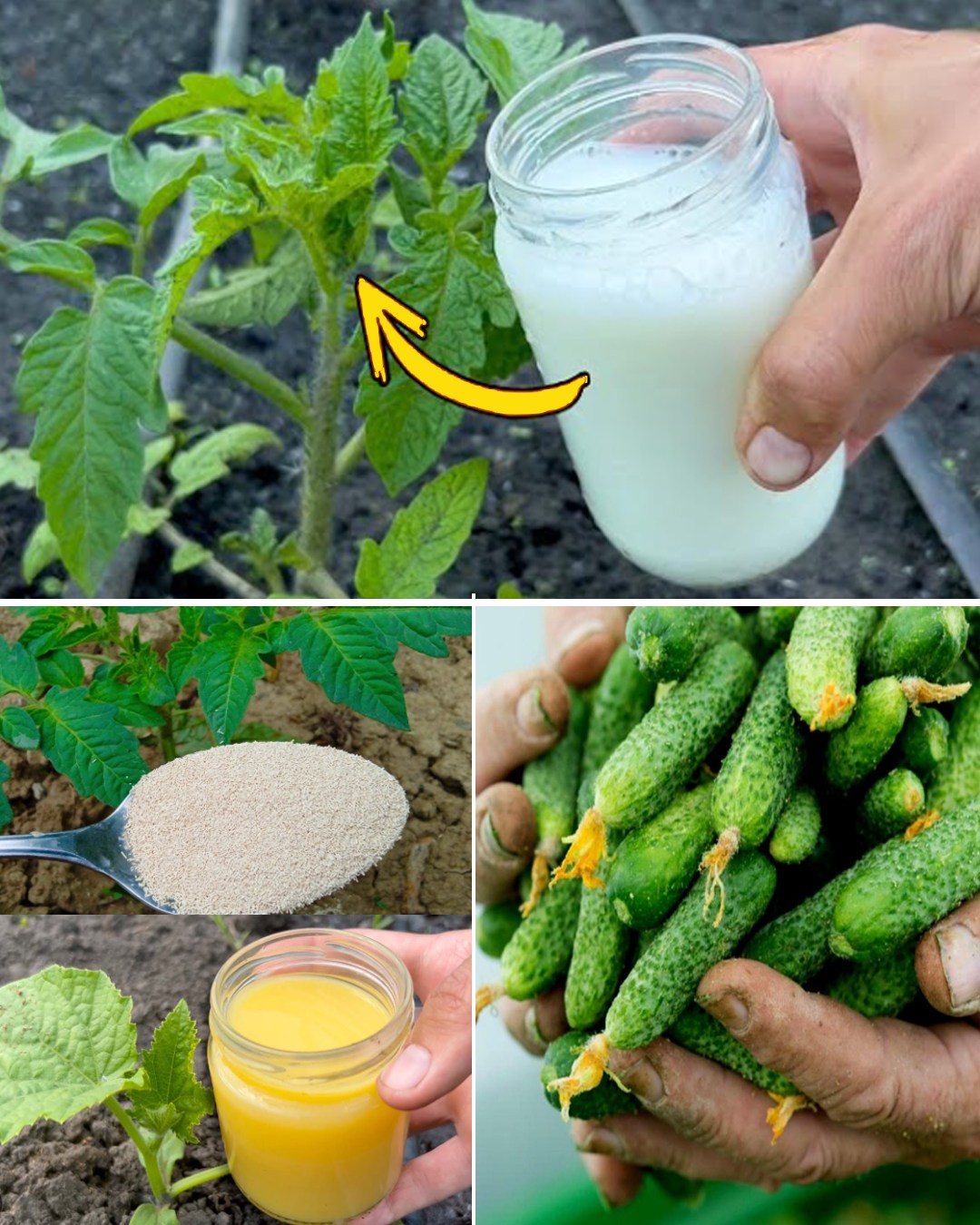Creating a bumper cucumber crop is the dream of many gardeners, and achieving it is not just a matter of luck or perfect weather. It involves adopting certain tried and true methods that can significantly increase your yield. This article delves into five ingenious hacks used by seasoned gardeners to double their cucumber harvest. Whether you’re a beginner or an experienced green thumb, these strategies can help you grow a more plentiful and healthier crop.

1.Choose the Right Variety
Not all cucumber varieties are created equal. Some are specifically bred for higher yields and resilience to pests and diseases. Gardeners in the know opt for hybrid varieties that are known for producing an abundant harvest. Additionally, selecting types suited to your local climate can also make a significant difference. For example, if your growing season is short, choosing a variety that matures quickly can help ensure a bountiful harvest.
2.Optimal Planting Techniques
Maximizing your cucumber yield starts with how and where you plant them. Cucumbers love warmth and sunlight, so choosing a sunny spot is crucial. Implementing vertical gardening by using trellises, stakes, or cages allows the plants to grow upwards, which not only saves space but also promotes air circulation, reducing the risk of disease. Moreover, vertical growth makes cucumbers easier to harvest. Planting cucumbers in raised beds or containers can also improve drainage and soil temperature, leading to healthier plants and more fruits.
3.Master the Art of Pruning
Pruning is a lesser-known but effective technique to increase cucumber yield. By removing some of the flowers and smaller cucumbers, you can direct the plant’s energy towards growing fewer, but larger and healthier fruits. Additionally, pruning helps improve air circulation and sunlight exposure to the fruits, reducing the risk of fungal diseases. Seasoned gardeners recommend removing lateral shoots that form at the base of the plant and any shoots that don’t bear flowers.
4.Consistent and Proper Watering
Cucumbers are made up of about 95% water, making consistent watering crucial for their growth. The key is to maintain moist, not waterlogged, soil. Overwatering can lead to root rot, while under-watering can stress the plants, leading to poor fruit development. Drip irrigation is a method favored by many gardeners, as it delivers water directly to the roots, minimizing waste and preventing leaf diseases that can be caused by overhead watering.

5.Fertilization and Soil Management
A high-yielding cucumber plant starts with fertile, well-draining soil. Seasoned gardeners enrich their soil with compost and well-rotted manure to provide essential nutrients. A balanced fertilizer, high in nitrogen at the beginning of the growing season and then switching to a phosphorus and potassium-rich fertilizer when blooming starts, can promote vigorous growth and fruit production. Moreover, mulching around the plants helps retain soil moisture and suppresses weeds, further contributing to the plants’ health.
Implementing these gardening hacks can significantly enhance your cucumber harvest. It’s all about understanding the needs of the plant and creating the optimal conditions for it to thrive. With a bit of effort and attention, you can enjoy an abundant supply of cucumbers throughout the season.
News
JJ Redick reacts to Luka Doncic trade for Anthony Davis
In one of the most jaw-dropping moves of the season, the NBA landscape was rocked by the blockbuster trade involving Luka Dončić and Anthony Davis—a swap that has sent ripples of excitement, disbelief, and heated discussion through the league. Among…
Anthony Davis FULL reaction to trade to Mavericks for Luka Doncic
In a blockbuster move that sent shockwaves through the NBA and left fans reeling, Anthony Davis has been traded to the Dallas Mavericks in exchange for Luka Dončić. In the immediate aftermath of the news, Davis took to the media…
Shaq reacts to Dallas Mavericks wanting Kevin Durant after Luka-AD trade 👀
In the constantly shifting world of the NBA, trade rumors and blockbuster moves are a regular part of the season’s drama. The latest twist has fans buzzing: the Dallas Mavericks have reportedly set their sights on acquiring Kevin Durant in…
Donovan Mitchell FILTHY poster dunk on Kristaps Porzingis 😳
In a game filled with high-intensity moments and jaw-dropping highlights, one play in particular has left fans and analysts buzzing about Donovan Mitchell’s latest display of athleticism. Early in the contest, with the atmosphere already charged by an evenly matched…
Joel Embiid hits go-ahead bucket vs Mavs then chats with Anthony Davis after game
In one of the most thrilling contests of the season, Joel Embiid delivered a clutch performance against the Dallas Mavericks, punctuating the game with a go-ahead bucket that sent the home crowd into a frenzy. The atmosphere in the arena…
D’Angelo Russell game winner as Nets hit two 3’s in 3 seconds to win vs Rockets 😱
In one of the most electrifying moments in recent NBA history, D’Angelo Russell delivered an unforgettable game-winner that left fans and commentators in complete awe. With the Brooklyn Nets locked in a tense battle against the Houston Rockets, the outcome…
End of content
No more pages to load











